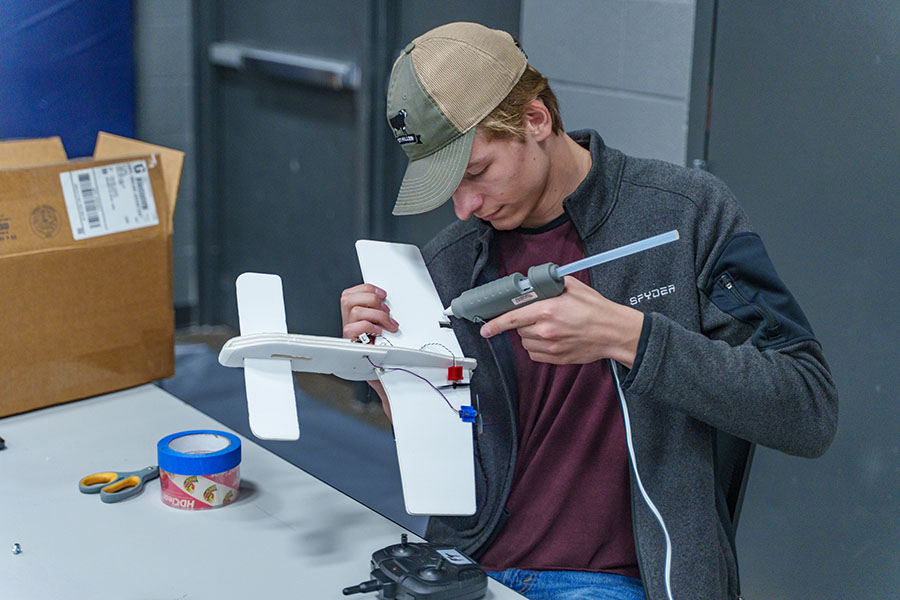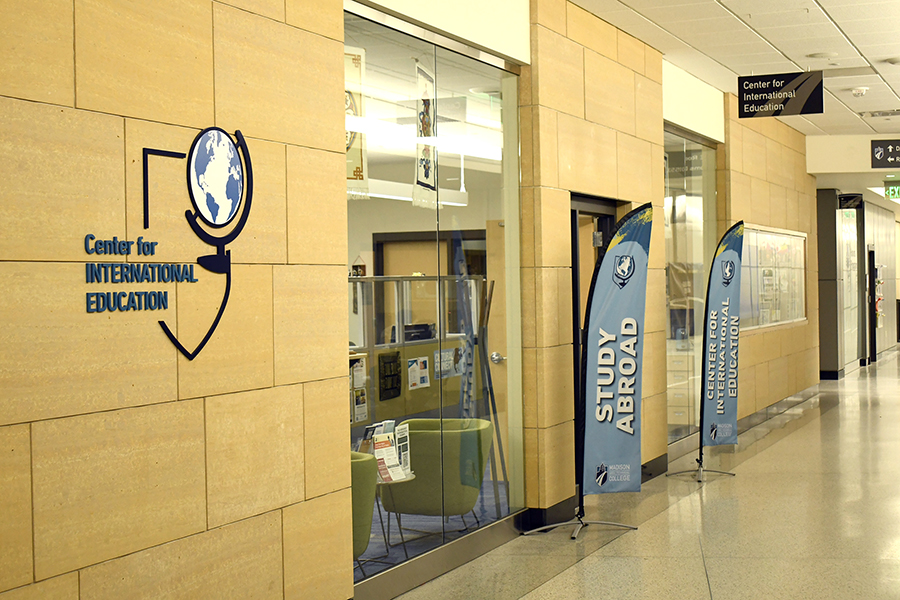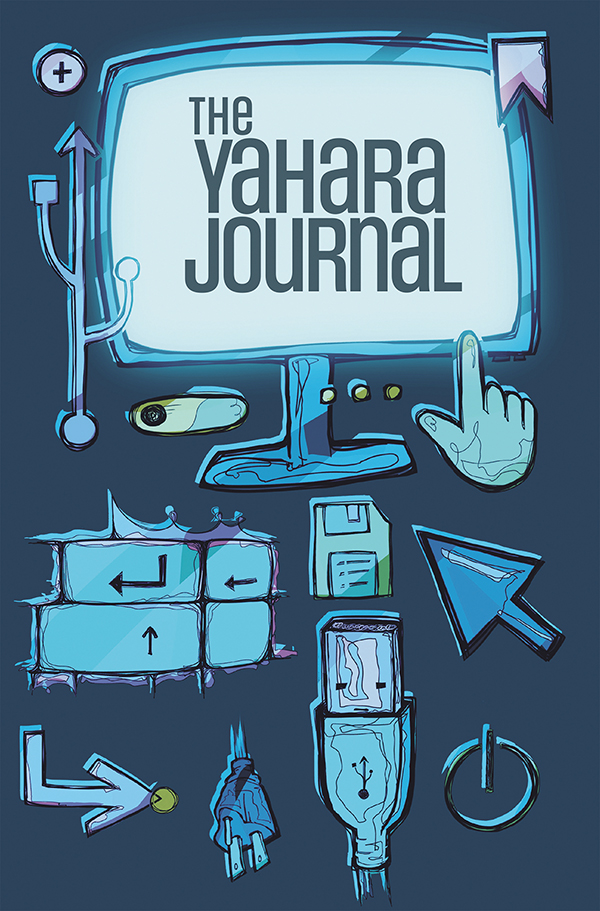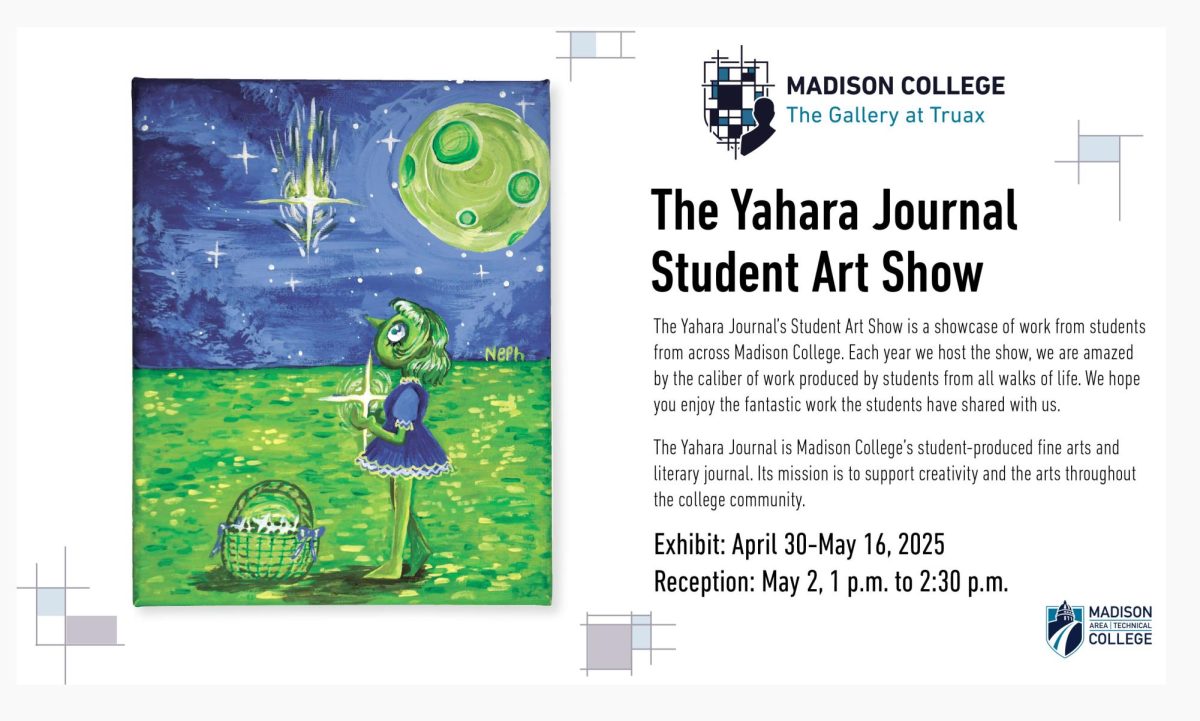Harry Houdini was one of the most famous and intriguing magicians of his time, and his legacy continues to live on today. A tribute to his life and career is currently on display in downtown Madison at the Madison Museum of Contemporary Art (MMoCA) with the presentation of Houdini: Art and Magic.
Harry Houdini was born Ehrich Weiss on March 24, 1874. An immigrant from Budapest and the son of a Rabi, Houdini grew up in poverty in Appleton, Wis. It was here that Houdini put on his first performance for the general public.
Due to a lack of interest from prominent photographers and artists of the time, Houdini began his career by performing free shows in the streets for public enjoyment. Being the clever man that he was, Houdini would perform outside of newspaper offices, knowing that they would cover his spectacles to fill their pages. Using this free publicity, when Houdini began performing in vaudeville theatres his shows were guaranteed to sell out.
After relocating from Appleton to New York City, Harry met his “Brother Houdini” Jacob Hayman, while working in a necktie factory. The two began putting on performances together before Houdini was discovered by vaudeville impresario Martin Beck. Houdini then began traveling the country to awe and amaze spectators with his many talents.
An American icon, Houdini gained the nickname “The Handcuff King” because of his incredible ability to escape from any amount of handcuffs, locks and chains. Houdini is said to have learned this talent from working with a locksmith in his youth. He would often challenge local police to present a handcuff that he could not escape from. Houdini’s other famous spectacles include needle swallowing and escaping from locked milk jugs, strait jackets, and water torture cells.
A free museum, the MMoCA showcases Houdini’s remarkable talents and abilities through various media. Original postcards, photographs, pamphlets and newspapers line the walls and display cases of the second floor exhibit. In addition to these original artifacts, MMoCA puts a modern spin on things with contemporary paintings, photographs and videos paying tribute to this wonderful magician.
The wonders of Houdini gained mainstream acceptance despite the anti-Semitic and anti-immigration views of the time. Some correlate Houdini’s escape artist ways with a symbolism of being freed from ethnic and religious oppression at the time.
While Houdini passed away in 1926, it is clear that his legacy continues to be carried forth. His feats and talents continue to amaze the general public long after his passing. Many books and videos have been produced about Houdini, exploring aspects of his life and his talents.
Houdini: Art and Magic is on display at the Madison Museum of Contemporary Art until May 13. Admission is free, and this exhibit is sure to entertain and inspire.

























